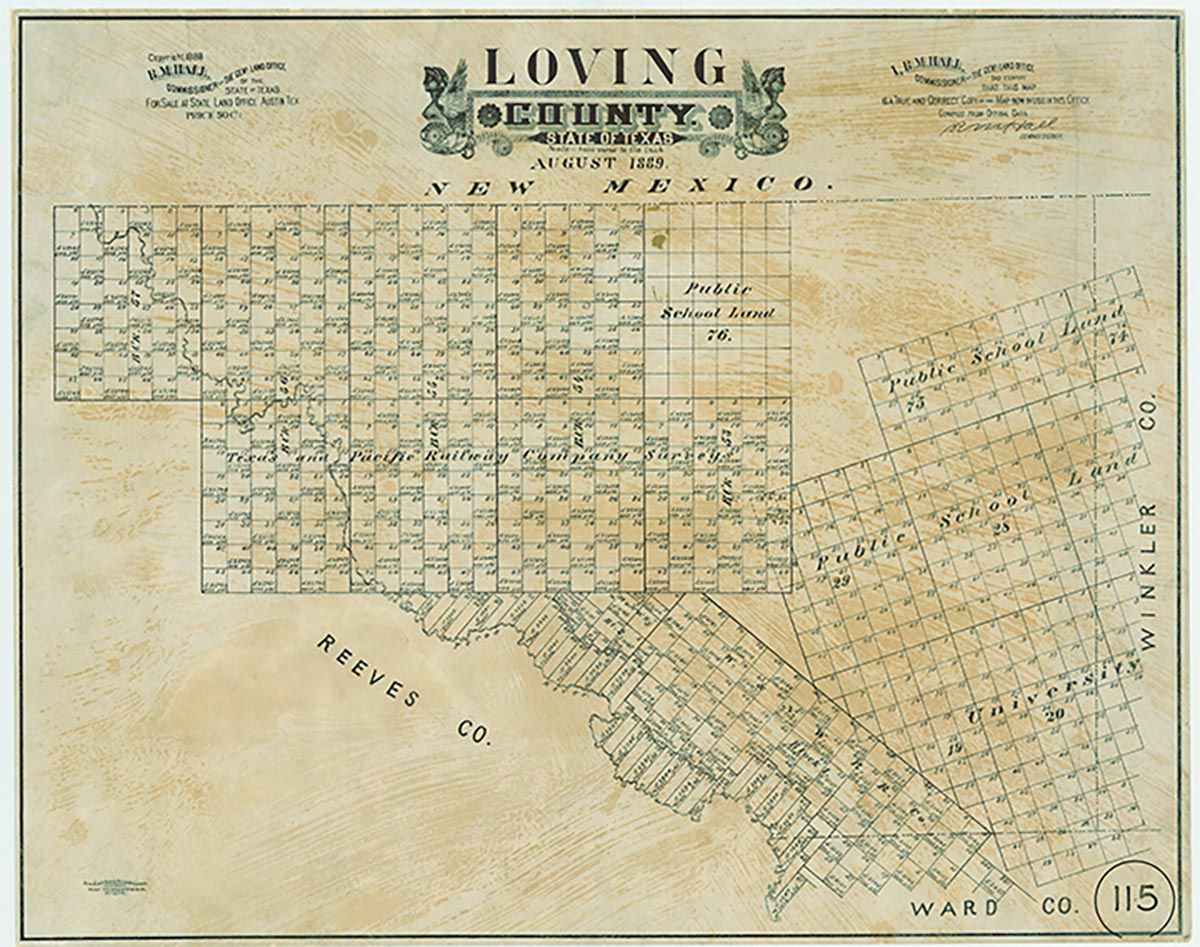Porterville
Porterville was located in the southwestern corner of Loving County on the east bank of the Pecos River, twenty-five miles northeast of Pecos. In 1905 Dr. Phil Porter, a physician from Michigan who believed in the health benefits of the Southwest, settled there and founded a colony. E. L. Stratton, a native of Ohio, founded a land company and settled in the colony in 1905. He maintained his home there until he died in 1953. In January 1908 Stratton contracted with S. V. Briggs, B. T. Briggs, and H. R. Templeton for the construction of an irrigation ditch three miles north of Porterville. The plan was to store the water supplied by the ditch in Briggs Reservoir and to irrigate 10,000 acres of Loving County land. But the system, called the Porterville Ditch Company, served only to inflate the price of Loving County farmland. The colony was originally called Juanita by the settlers, but Porter platted the townsite on June 8, 1908, and called it Porterville. A post office named Juanita opened there on November 19, 1909, but was officially changed to Porterville on February 21, 1910. Settlers donated money and labor for a community building to serve as both a school and a nondenominational church; it was completed in March 1909. The first school in Loving County opened at Porterville with Miss Celinda Newton as the teacher. The building was moved to Mentone in the spring of 1931 and continued in use as the only school in the county until it was replaced in 1935. At the end of the 1980s the building displayed a historical medallion as the oldest public building in the county and was still used as a community center and a church.
Arno, a settlement two miles west of Porterville across the river in Reeves County, was connected to Porterville by a bridge and had a depot on the Pecos River Railroad, so Porterville had easy access to shipping and passenger service. At one time the town had a boardinghouse, a hotel, a blacksmith shop, a cobbler's shop, a doctor's office, a lumberyard, a land office, a post office, and two general stores. Porterville failed because irrigation promoters failed to fulfill their promises. Some of the Porterville land sold in the beginning for $150 per acre and represented a large investment. The water supply of the river, however, was inadequate to support all of the dams built by promoters. In 1909 Porterville had twelve farms with a total of 1,040 acres of irrigated land. By 1913 the disillusioned farmers moved away or turned to ranching. The number of acres under irrigation was reduced to 600. By 1923 the river reached lower levels and the water became salty. In 1925 oil was discovered in Loving County, and in 1931 a new town called Mentone was founded two miles northeast of Porterville. The residents of Porterville, which had been the only town in Loving County for eighteen years, gradually moved to Mentone.
Julia Cauble Smith | © TSHA

Adapted from the official Handbook of Texas, a state encyclopedia developed by Texas State Historical Association (TSHA). It is an authoritative source of trusted historical records.

- ✅ Adoption Status:
- This place is available for adoption! Available for adoption!
- Adopted by:
- Your name goes here
- Dedication Message:
- Your message goes here
Belongs to
Porterville is part of or belongs to the following places:
Currently Exists
No
Place type
Porterville is classified as a Town
Associated Names
- (Juanita)
Location
Latitude: 31.66022000Longitude: -103.60336700
Has Post Office
No
Is Incorporated
No

